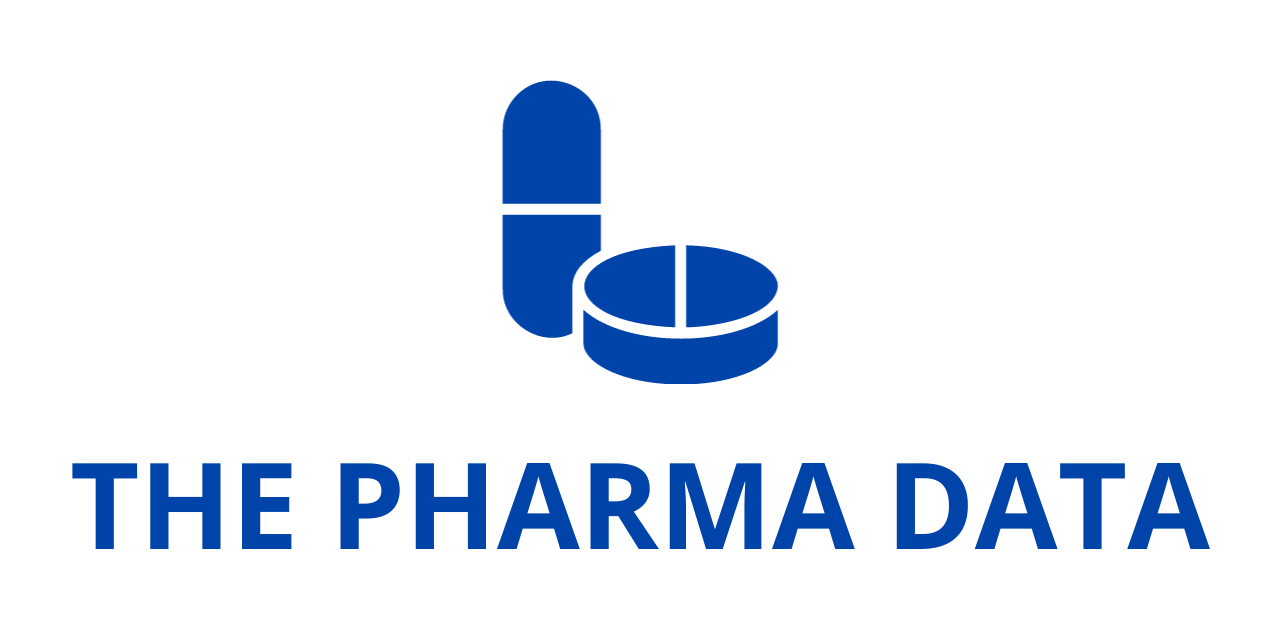
Daiichi Sankyo Advances Cardiovascular Care with Development of Oral Triple Combination Lipid-Lowering Tablets
A New Chapter in Cholesterol Management
Daiichi Sankyo Europe has unveiled an ambitious new initiative: the development of innovative oral triple combination tablets designed to help patients more effectively manage low-density lipoprotein cholesterol (LDL-C), often referred to as “bad cholesterol.” These new formulations will integrate bempedoic acid, ezetimibe, and different statin doses (atorvastatin or rosuvastatin) into a single daily pill, representing a significant milestone in the ongoing fight against cardiovascular disease (CVD).
The concept is as straightforward as it is transformative—reduce pill burden by consolidating three proven lipid-lowering agents into one convenient tablet, thereby improving adherence, streamlining therapy, and enhancing the likelihood of patients achieving their cholesterol targets. This strategy reflects both the evolving landscape of dyslipidaemia treatment and Daiichi Sankyo’s broader mission to address unmet needs in cardiovascular medicine.
Dr. Stefan Seyfried, Vice President and Head of Medical Affairs Specialty Medicines at Daiichi Sankyo Europe, framed the initiative in human terms:
“As bempedoic acid and ezetimibe are already approved as a single-dose therapy, the development of an oral triple combination tablet with different doses of a statin can make it easier for physicians to tailor treatment to the individual needs of each patient. This approach exemplifies our dedication to our motto: ‘we care for every heartbeat’.”
Why Combination Therapy Matters
The idea of combining lipid-lowering therapies is not new, but its importance is becoming increasingly evident as real-world data highlights persistent gaps in cholesterol control.
Professor Yvonne Winhofer-Stöckl of the Medical University of Vienna contextualized the approach by drawing parallels to another major cardiovascular field:
“The management of dyslipidaemias is undergoing the same evolution we previously witnessed in hypertension management. First, we learned to combine medication to achieve higher efficacy with fewer side effects, then we ascertained that replacing multiple separate pills with fixed-dose combination options increased adherence and improved outcomes.”
This Daiichi Sankyo insight points to a recurring theme in cardiovascular medicine: single therapies often fall short in real-world practice, not because they lack efficacy in clinical trials, but because patients and physicians face barriers to consistent, long-term use. Polypharmacy—taking multiple separate pills every day—has long been recognized as a driver of poor adherence. Reducing this burden can directly translate into better patient outcomes.
The Clinical Context: ESC Congress 2025
Daiichi Sankyo’s announcement coincided with the presentation of new registry data at the European Society of Cardiology (ESC) Congress 2025, one of the largest and most influential cardiovascular meetings globally. Results from the MILOS and SANTORINI registries, both of which track real-world cholesterol management practices across Europe, underscored the pressing need for new solutions.
MILOS Registry Insights
The MILOS registry highlighted several concerning trends:
- Underestimation of cardiovascular risk: Up to 50% of high-risk patients and as many as 70% of very high-risk patients were assigned a lower cardiovascular risk category in clinical practice.
- Gender disparities in treatment: Women were consistently less likely to receive intensive lipid-lowering therapy (LLT) compared to men, even when they had equivalent risk profiles.
- Real-world evidence of bempedoic acid: The addition of bempedoic acid over eight weeks, with or without other LLTs, demonstrated significant LDL-C reductions in both men and women, with no new safety signals.
These findings reveal a systemic challenge: patients are often undertreated relative to their actual risk, and vulnerable populations, particularly women, face inequities in care.
SANTORINI Registry Insights
Data from the SANTORINI registry painted a similarly sobering picture:
- Only 20% of high-risk and very-high-risk patients with elevated LDL-C received intensification of therapy.
- Older patients were less likely to be treated intensively than younger patients, despite equal or greater risk.
- Real-world prescribing data from Germany showed that nearly three-quarters of high or very high cardiovascular risk patients were not prescribed any lipid-lowering therapy at all.
These gaps are alarming given that LDL-C is one of the most modifiable cardiovascular risk factors.
The Case for Triple Therapy
Evidence presented at both the ESC and the European Atherosclerosis Society (EAS) Congress 2025 strengthened the rationale for fixed-dose combination therapy.
Simulation data from the SANTORINI cohort suggested that six in ten patients could achieve LDL-C goals and substantially reduce long-term cardiovascular risk with an optimized triple oral lipid-lowering pathway—specifically the combination of bempedoic acid, ezetimibe, and a statin.

This is consistent with broader evidence showing that combination therapy often outperforms statin up-titration alone. Intensification with multiple agents, rather than pushing a statin to its highest dose, not only provides more robust LDL-C reductions but may also reduce the risk of dose-related side effects.
The potential of the oral triple combination is further validated by its recognition in the 2025 Focused Update of the 2019 ESC/EAS Guidelines for the Management of Dyslipidaemias, which emphasize the value of combination therapies in achieving cholesterol goals.
Cardiovascular Disease: A Global Challenge
Cardiovascular Daiichi Sankyo disease remains the leading cause of death in Europe and a dominant contributor to global morbidity and mortality. Dyslipidaemia—specifically elevated LDL-C—plays a central role in this burden.
- Epidemiology: Hundreds of millions worldwide have elevated cholesterol, yet a large percentage remain undiagnosed or inadequately treated.
- Risk factor modification: LDL-C reduction is one of the most powerful tools in preventing heart attacks, strokes, and other major adverse cardiovascular events (MACE).
- Impact of therapies: Decades of clinical trial evidence demonstrate that lowering LDL-C reduces the risk of cardiovascular events, often in a dose-dependent manner.
Despite these well-established facts, the translation of science into practice is far from perfect. Suboptimal use of lipid-lowering therapies persists due to:
- Inconsistent clinical practices – not all physicians intensify treatment when patients remain above target.
- Adherence barriers – pill burden and side effects discourage patients from staying on therapy.
- Treatment inertia – hesitation to escalate therapy even when patients clearly require it.
- Limited use of combinations – despite guidelines, many patients remain on statin monotherapy.
The result is predictable: a substantial proportion of high-risk patients fail to reach recommended LDL-C levels, leaving them vulnerable to heart attacks, strokes, and premature death.
Daiichi Sankyo’s Role in Cardiovascular Innovation
Daiichi Sankyo’s Specialty Medicines Unit has positioned itself as a leader in cardiovascular innovation, with a mission that extends beyond drug development to patient empowerment and disease prevention.
The company frames its approach in humanistic terms:
“We intend to protect people from Daiichi Sankyo cardiovascular disease and support those affected, helping them enjoy every precious moment of life.”
This philosophy underpins a patient-centric development strategy, one that seeks not only to create effective therapies but also to align them with real-world needs. By focusing on fixed-dose combinations, Daiichi Sankyo is addressing one of the most persistent barriers in lipid management—adherence.
The Science Behind the Triple Pill
Each component of the planned triple therapy has a distinct mechanism of action:
- Statins (atorvastatin or rosuvastatin) – The backbone of lipid-lowering therapy, statins inhibit HMG-CoA reductase, the rate-limiting enzyme in cholesterol synthesis. They are proven to reduce LDL-C by up to 50% or more depending on dose.
- Ezetimibe – Works in the intestine to block the absorption of cholesterol from food and bile, typically reducing LDL-C by an additional 15–20% when added to a statin.
- Bempedoic acid – A newer agent that inhibits ATP citrate lyase, another enzyme upstream of HMG-CoA reductase. Importantly, it is activated only in the liver, minimizing the risk of muscle-related side effects often seen with statins.
By combining these agents, the triple pill can attack LDL-C through complementary pathways, maximizing cholesterol reduction while minimizing the risks associated with high-dose statin therapy alone.
The Potential Impact
If successful, Daiichi Sankyo’s oral triple combination could have far-reaching implications:
- Improved adherence: Fewer pills mean simpler regimens and better compliance.
- Personalized therapy: Multiple statin dose options allow physicians to tailor treatment to individual patient needs.
- Equity in care: By simplifying therapy, disparities in treatment access—such as those seen between men and women—may be reduced.
- Population-level benefits: Widespread use of combination therapy could substantially lower the burden of cardiovascular disease across Europe and beyond.
The company has not yet disclosed the exact timeline for development or anticipated regulatory submissions, but the alignment of its program with real-world needs and updated guidelines suggests strong momentum.
The launch of Daiichi Sankyo’s oral triple combination lipid-lowering tablets marks more than just a new product in development—it represents a paradigm shift in cholesterol management. By combining statins, ezetimibe, and bempedoic acid into a single pill, the Daiichi Sankyo company is addressing persistent challenges in adherence, treatment inertia, and therapeutic intensification.
Supported by compelling registry data (MILOS and SANTORINI), endorsed by updated European guidelines, and grounded in a patient-first philosophy, this initiative has the potential to redefine standards of care for millions living with dyslipidaemia.
Cardiovascular Daiichi Sankyo disease continues to take millions of lives annually, but each step toward better LDL-C management represents hope—hope for longer lives, fewer heart attacks and strokes, and healthier communities. Daiichi Sankyo’s motto, “we care for every heartbeat,” resonates deeply with this mission, embodying a vision where innovation in medicine directly translates to protection, prevention, and precious years of life gained.
About SANTORINI
The SANTORINI (NCT04271280) study is a multinational, prospective, observational study that enrolled 9,602 patients with high and very high cardiovascular (CV) risk from over 623 sites in 14 countries across Europe. Patients were recruited between March 2020 and February 2021.2,16 The primary objective was to document, in the real-world setting, the effectiveness of current low-density lipoprotein cholesterol (LDL-C) management approaches in high- and very high-cardiovascular risk patients requiring lipid-lowering therapies (LLT) over a 1-year period.17 The study included both previously diagnosed and treated patients and those newly diagnosed and requiring treatment.16
Complete baseline data was included for 9,044 patients (mean age: 65.3 ± 10.9 years; 72.6% male).16 Physicians used 2019 ESC/EAS guidelines as a basis for CV risk classification in 52% of patients; 29.2% of patients were classified as high risk and 70.8% as very high risk.16 Central reassessment with the same guidelines classified 6.5% as high risk and 91% as very high-risk.16 Overall, 21.8% of patients had no documented LLTs, 54.2% were receiving monotherapy and 24% combination LLT.16 Median LDL-C was 2.1 mmol/L with 20.1% of patients achieving risk based LDL-C goals as per the 2019 ESC/EAS guidelines.16
About MILOS
MILOS (NCT04579367) is an ongoing, multinational, European observational study in adult patients diagnosed with primary hypercholesterolaemia or mixed dyslipidaemia.1 The aim is to evaluate the real-world use of bempedoic acid and bempedoic plus ezetimibe fixed-dose combination. Beyond Germany, MILOS has sites in Austria, Belgium, Italy, the Netherlands, Spain, Switzerland and the UK.1
About Bempedoic Acid and its Fixed-Dose Combination with Ezetimibe
Bempedoic acid (NILEMDO®) is a first-in-class, oral, once-daily treatment that lowers low-density lipoprotein cholesterol (LDL-C) by inhibiting ATP citrate lyase (ACL), upstream of the statin target in the cholesterol synthesis pathway.18,19 It is not activated in skeletal muscle and can be used alone or in combination with statins or other lipid-lowering therapies, particularly in patients who are statin-intolerant or not achieving LDL-C goals. The fixed-dose combination of bempedoic acid and ezetimibe (NUSTENDI®) combines two different ways of reducing cholesterol in a once-daily tablet.20
For full prescribing information, including indications and usage, refer to the respective Summary of Product Characteristics (SmPC).18,20 Daiichi Sankyo Europe holds exclusive commercialisation rights for NILEMDO® and NUSTENDI® in the EEA, UK, Turkey, and Switzerland under license from Esperion.
About Atorvastatin and Rosuvastatin
These medicines belong to a group of medication that lower low-density lipoprotein cholesterol to block HMG-CoA reductase enzyme in the liver and thus the production of cholesterol. They act in the same pathway as bempedoic acid, but at a different point.21,22
About Daiichi Sankyo
Daiichi Sankyo is an innovative global healthcare company contributing to the sustainable development of society that discovers, develops, and delivers new standards of care to enrich the quality of life around the world. With more than 120 years of experience, Daiichi Sankyo leverages its world-class science and technology to create new modalities and innovative medicines for people with cancer, cardiovascular, and other diseases facing significant therapeutic needs. For more information, please visit www.daiichisankyo.com.




